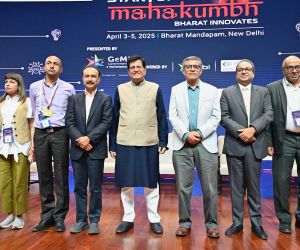MORE COVERAGE
Twitter Coverage
Satyaagrah
Written on
Satyaagrah
Written on
Satyaagrah
Written on
Satyaagrah
Written on
Satyaagrah
Written on
JOIN SATYAAGRAH SOCIAL MEDIA
Ten most compelling evidence of Extraterrestrial existence from 2020

Some say it’s obvious we’re not alone, others scorn the very idea and still others yet will hauntingly report their own experiences of alien probings following their casual night-time stroll through the fields of small town America. But with everything from increasingly bizarre reportings from increasingly credible sources, to basic mathematical probability suggesting the likelihood of alien life, these days, scepticism is harder won.
Ancient Evidence
It’s easy enough to write off much recent phenomena, quoting anything from wayward weather balloons to the perpetuation of the legend and UFO sightings in pop culture providing a cohesive image of extra terrestrials for eye witnesses to draw on should someone cry alien. But what’s slightly harder to dismiss is the ancient evidence (i.e. pre the National Enquirer). Enter the ‘The Madonna with Saint Giovannino’, otherwise known as the UFO painting.
Created in the 15th century, it depicts the Virgin Mary and in the backdrop of the painting, a man and his dog staring up at a hovering disk-like object that is suspiciously familiar. And this painting isn’t alone either, with everything from ancient cave paintings to Sanskrit Scrolls all depicting alien life. A sighting even crops up in the Bible in The Book of Ezekiel. Either this is compelling evidence, or humanity has a rich tradition of conspiracy theorists.
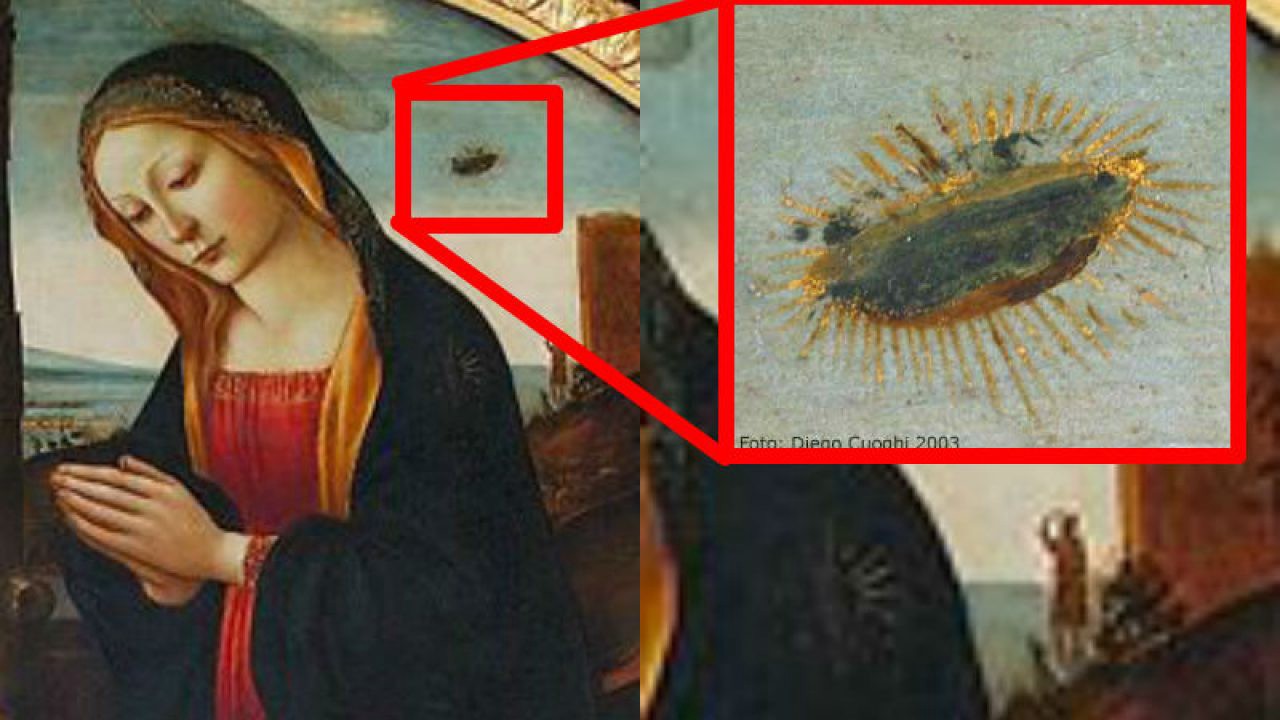 The Madonna with Saint Giovannino. (Right) A mysterious object in the painting. Images taken from Wikimedia Commons. |
Statistical Data
Back in 1961, astronomer Frank Drake devised an equation by which he could estimate the likelihood of the existence of alien life, taking into account a number of factors including the average number of planets able to support life and the fraction that could go on to support intelligent life. This was then implemented in 2001. The result: statistically, hundreds of thousands of such planets should technically exist.
Unsolved Sightings
There are more registered sightings of UFOs than there is the word count here to deal with them and the majority of the time, there’s a thorough debunking accompanying them. But throughout history there have been a number that have been harder to explain away, from the to 1853 sighting by a number of students and professors at the Tennessee College campus, to the oft quoted Stephenville Lights case from 2008, with over 200 witnesses spotting the UFO including three policemen who remained anonymous. Consider these compelling cases unsolved.
Astronaut's Claims
If you’re going to believe any reports of UFOs, you might as well trust those coming from the men who have actually been to space (who usually also come with all their teeth and a P.H.D.). The list of those who have made claims of sightings includes Edgar Mitchell, Cady Coleman and Dr. Brian O’Leary, many also referencing government knowledge of alien existence and cover-ups. Buzz Aldrin has also spoken of his own experience on board the Apollo 11 when they saw something flying alongside them. At first they thought it was the final stage of the detached rocket, until mission control confirmed it was 6000 miles away from them…
Government Files
While some US presidents have released classified files on the subject of UFOs, with Jimmy Carter famously describing his own encounter, others still have been denied access to classified information on the subject altogether, Bill Clinton claiming to be among them. This has led many believers to suggest there’s a cover up afoot. Clinton has been consistently vocal on the existence of aliens and it’s worth noting his opinions on an ‘Independence Day’ situation too.
Many discoveries seemed to have increased the prospect of extraterrestrial entities existing. Findings on the closest planet to us, in the outer solar system and the far beyond seemed to point to the possibility that other worlds could host organisms ranging from bacteria to technological beings. Perhaps, new results in the coming year will finally reveal who else might be out there.
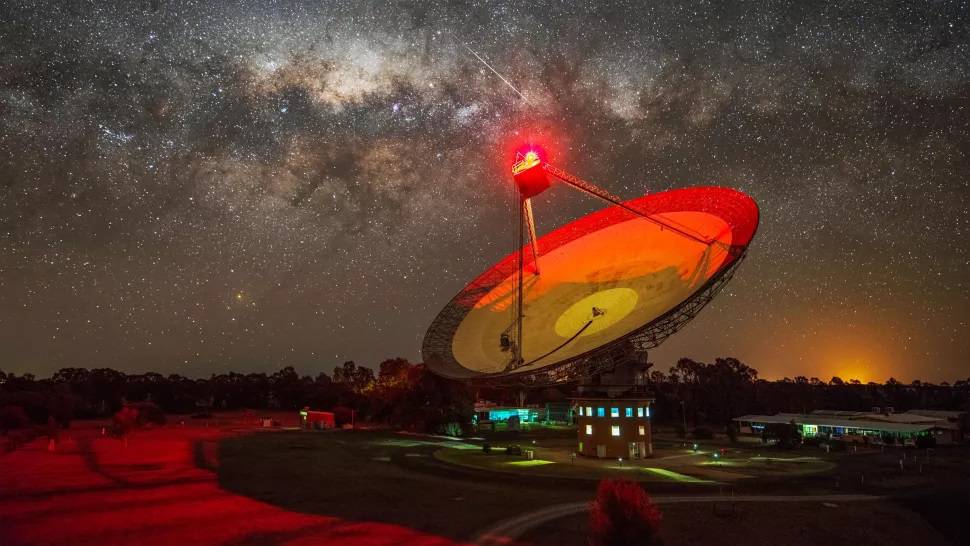 Image credit: CSIRO/A. Cherney |
Is E.T. phoning us from Proxima Centauri?
The answer to weird signals happening in the universe is never aliens, until maybe it is. In the month of Dec'2020, researchers announced that they had captured a very mysterious beam of energy in the radio part of the electromagnetic spectrum at 980 megahertz, coming from the closest star to our own. Proxima Centauri, which is just 4.2 light-years away, hosts one gas giant and one rocky world 17% larger than Earth that happens to be in its star's habitable zone, meaning liquid water could exist there. The unexplained signal reportedly shifted slightly while it was being observed, in a way that resembled the shift caused by the movement of a planet. Researchers are excited but cautious, explaining that they will need to figure out if more mundane sources, such as a comet, hydrogen cloud or even human technology, could be mimicking an alien signal, and that it will likely take time before they know one way or another if E.T. is phoning us.
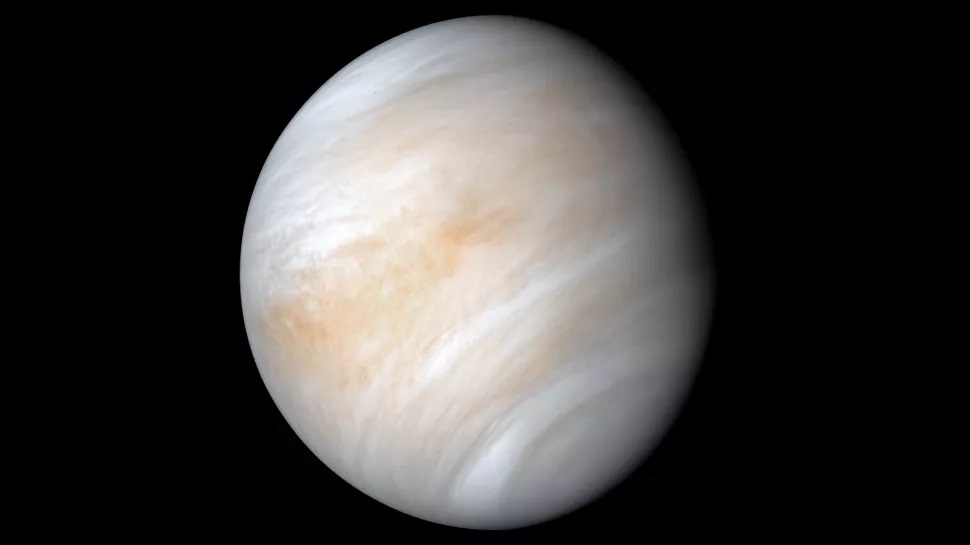 Image credit: NASA |
Alien bacteria might live in the clouds of Venus
Astrobiologists were a-twitter with anticipation and skepticism in September when news broke of potential evidence of life in the upper clouds of Venus. The announcement pointed to the presence of phosphine, a rare and often poisonous gas that, on Earth at least, is almost always associated with living organisms. With its hellish surface temperature, outlandish pressure and sulfuric-acid clouds, Venus has long played second fiddle to the seemingly more potentially habitable Mars. But a team aimed both the James Clerk Maxwell Telescope in Hawaii and the Atacama Large Millimetre/submillimetre Array in Chile at Venus and picked up phosphine's signature in a Venusian cloud layer with downright Earth-like temperatures and pressures. Terrestrial bacteria are known to thrive in some pretty tough conditions, making the biological explanation a not unreasonable one. The research team doesn't claim that it is airtight evidence of space bugs, and many in the community aren't quite convinced, but if nothing else it will mean more funding in the hunt for life in unlikely places.
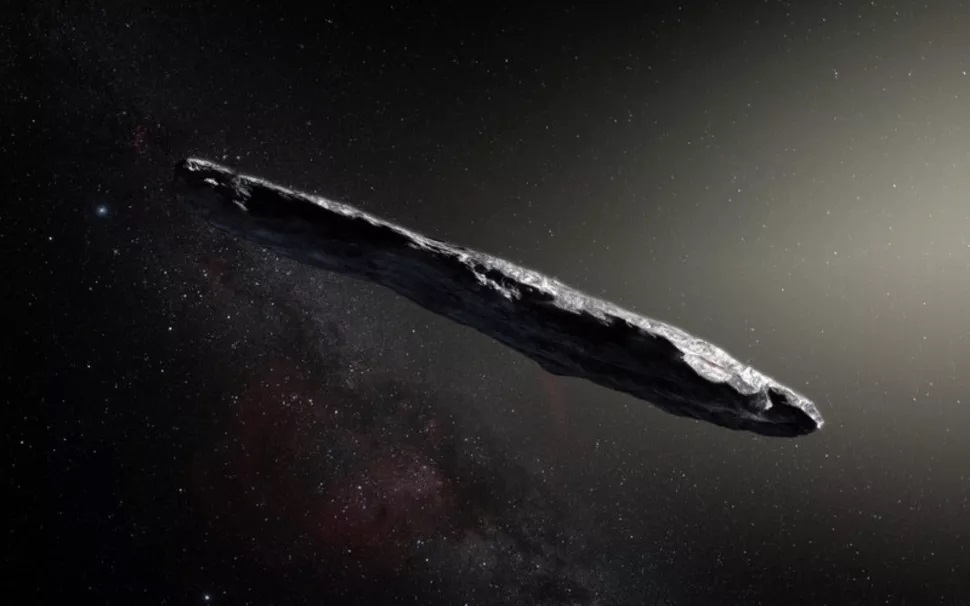 (Image credit: M. Kornmesser/ESO |
'Oumuamua could still be an alien artifact
Two years ago, scientists spotted a cigar-shaped object hurtling through the solar system. Dubbed 'Oumuamua, the entity is considered by most to be an interstellar comet flung out from around another star. But close observations showed that 'Oumuamua was accelerating, as if something were propelling it, and scientists still aren't sure why. Avi Loeb, a Harvard University astrophysicist has proposed that, instead of a comet, the interstellar visitor could have been an alien probe pushed by a lightsail — a wide, millimeter-thin piece of material that accelerates as it's pushed by solar radiation. Other scientists have thrown cold water on Loeb's idea, pointing out that hydrogen ice could have melted off the object in a way that was similar to a rocket engine or other propulsion method. But in August, Loeb fired back, writing in a study stating that hydrogen ice is very easily heated, even in the cold depths of interstellar space, and should have sublimated away before 'Oumuamua reached our system. It seems the debate might go on for a little longer at least.
Footage of an unidentified object in midair, January 2015. The mysterious footage was captured using infrared cameras in November 2004 and January 2015, and emerged online after unauthorized leaks in 2007 and 2017. Footage from the US Department of Defence, via Sciencealert. |
Navy declassifies UFO videos but don't believe the hype
A fair number of Earthlings don't care what ambiguous evidence scientists come up with to show that aliens are out there. They are convinced that we've been visited by technological beings many times, pointing to stories about UFOs and alien encounters (pretty much all of which have been debunked). True believers received a boost in April when the U.S. Navy released footage captured by pilots that showed odd wingless aircraft traveling at hypersonic speed, looking for all intents and purposes like bizarre alien machinery. Despite the existence of such videos, people should still be wary, argued freelance journalist Sarah Scoles in her book "They Are Already Here: UFO Culture and Why We See Saucers" (Pegasus Books, 2020). After deciding to look into the Navy evidence, Scoles was unable to determine if it really showed alien aircrafts. But she found a much more human story by speaking to leaders in contemporary UFO culture and discussing our very basic need to believe in something beyond ourselves.
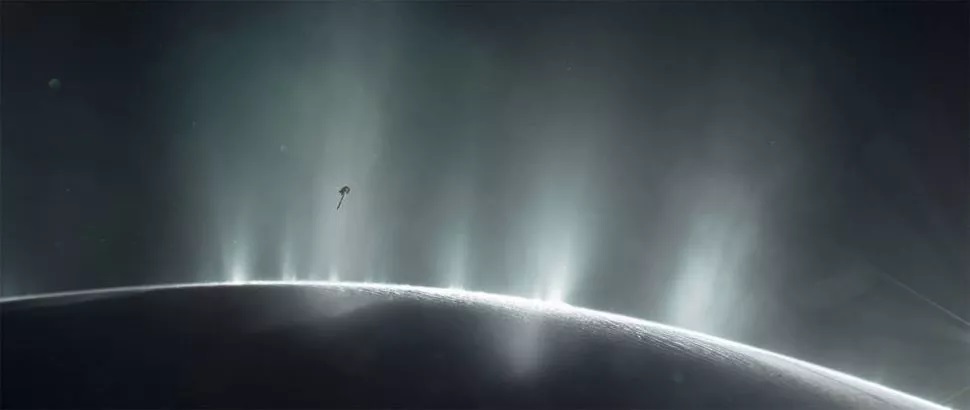 Image credit: NASA/JPL-Caltech |
Milky Way could be teeming with ocean worlds
Ocean worlds, which are classified as those having significant amounts of water on or just beneath their surfaces, are surprisingly common in the solar system. Earth is obviously one such place, but Jupiter's moon Europa is thought to host vast seas under its icy shell and Saturn's moon Enceladus is known to have watery geysers spewing from its exterior. Momentum is in fact building in the astronomy community to send a probe that could land on either satellite sometime in the 2030s and check if any living things might lurk under their shells. As for ocean worlds beyond our sun, in a study released in June, researchers looked at 53 exoplanets similar in size to Earth and analyzed variables including their size, density, orbit, surface temperature, mass and distance from their star. The scientists conclude that, of the 53, roughly a quarter might have the right conditions to be considered ocean worlds, suggesting that such places could be relatively common in the galaxy.
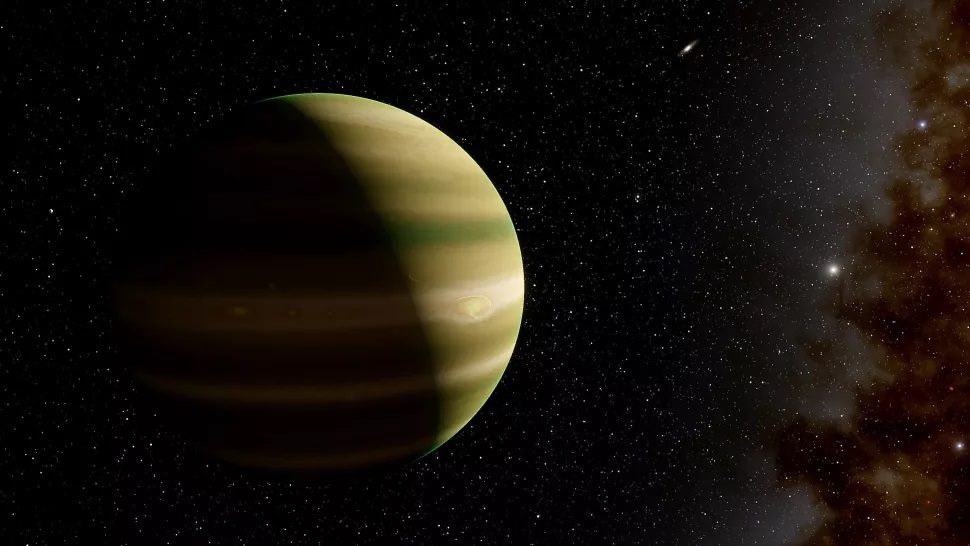 Image credit: Shutterstock |
Earth bugs breathe hydrogen, maybe aliens do too
Most Earthlings require oxygen to survive. But oxygen isn't common in the cosmos, making up about 0.1% of the ordinary mass of the universe. There's far more hydrogen (92%) and helium (7%), and many planets, including gas giants like Jupiter and Saturn, are made mostly from these light elements. In May, scientists took E. coli (a bacteria found in the guts of many animals, including humans) and ordinary yeast (a fungus used to bake bread and make beer) and tried to see if they could live in different environments. Such microbes are already known to survive without oxygen and, when placed in a flask filled with either pure hydrogen or pure helium, they managed to grow, albeit at slower rates than usual. The findings suggest that when searching for organisms elsewhere in the universe, we might want to consider places that don't look exactly like Earth.
 |
Life could live around a black hole
When hunting life on other worlds, most scientists stick to what they know — searching for Earth-size worlds orbiting sun-like stars. But far more exotic configurations could exist such as a planet circling around and heated by a black hole. At first glance, such a scenario seems absurd. But, contrary to popular depictions, black holes don't just suck in everything around them. Gravitationally stable orbits are possible and the light from the cosmic background radiation — a relic with temperatures at near absolute zero from the early universe that permeates all of space — would get heated as it fell into the black hole. As a paper released in March showed, this could provide warmth and energy to any organisms that happened to evolve in such a strange location.
 |
1,000 places ET could be watching us from
As we hunt for beings beyond our planet, it's important to keep in mind that we might not be the only ones doing so. In October, researchers came up with a catalog of 1,004 nearby stars that would be in a good position to detect life on Earth. "If observers were out there searching [from planets orbiting these stars], they would be able to see signs of a biosphere in the atmosphere of our Pale Blue Dot," study lead author Lisa Kaltenegger, an associate professor of astronomy at Cornell and director of the university's Carl Sagan Institute, said in a statement. Using observational tools similar to the transit-timing methods that human astronomers use to study exoplanets, such alien onlookers could hunt for oxygen and water in our atmosphere and perhaps conclude that Earth is a good home for organisms.
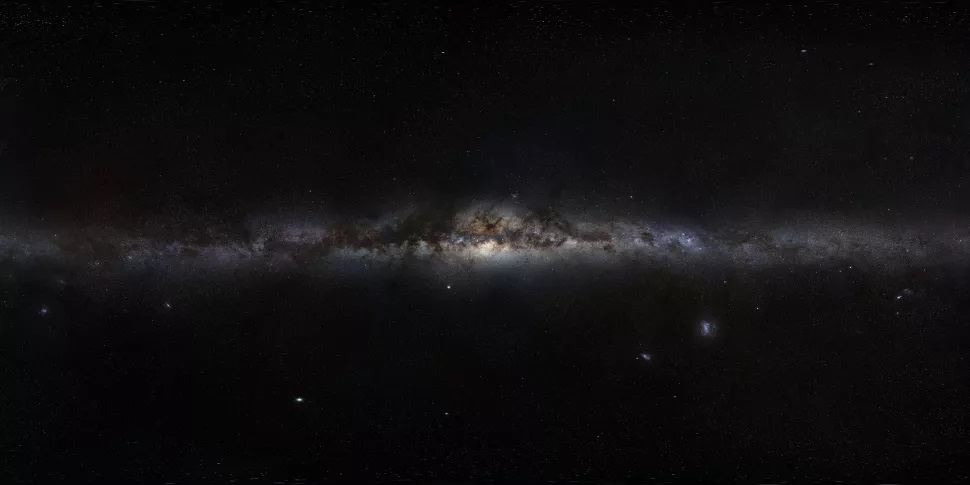 Image credit: European Souther Observatory |
Most aliens are probably dead
Where there's life, there's also death. While we like to imagine that our galaxy is teeming with technological beings capable of contacting us, the flip side is recognizing that all cultures rise and fall, meaning that plenty of cosmic societies likely bit the dust long ago. A model released in December put some numbers to these truths, taking into account such things as the prevalence of sun-like stars hosting Earth-like planets; the frequency of deadly, radiation-blasting supernovas; the time necessary for intelligent life to evolve if conditions are right; and the possible tendency of tool-bearing beings to destroy themselves. The analysis found that the highest probability of life emerging in the Milky Way likely happened around 5.5 billion years ago, before our planet even formed, suggesting that humanity is a relative latecomer to the galaxy and that plenty of our potential otherworldly partners are no longer around to talk to us.
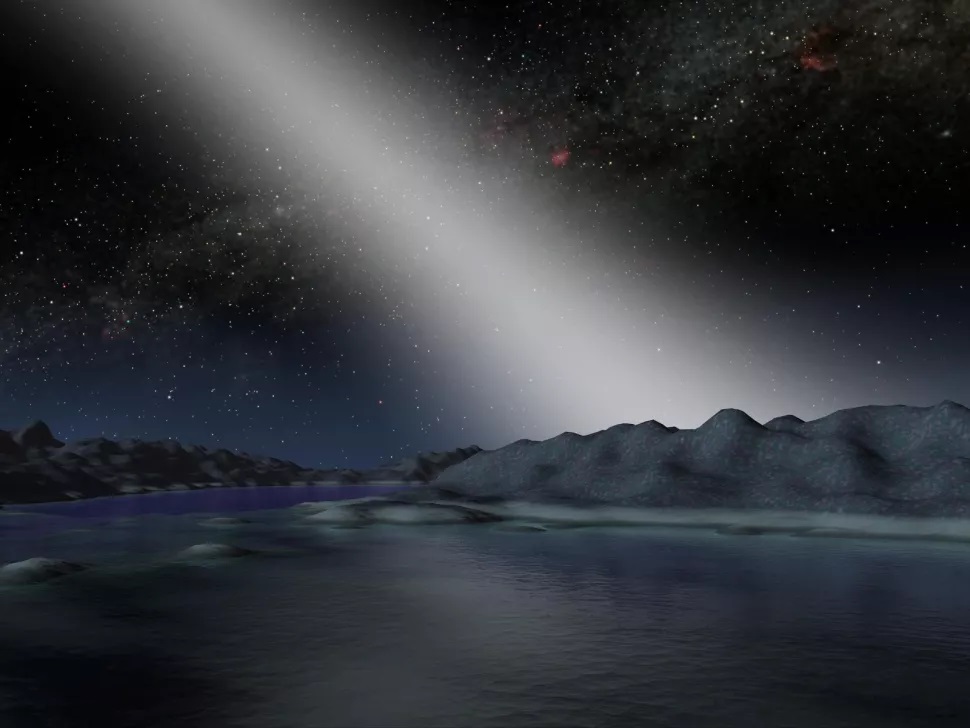 Image credit: NASA/JPL-Caltech |
We should be open-minded as we search for life elsewhere
The human brain has plenty of constraints. We are misled by cognitive biases, optical illusions and inattentional blindness to things we don't expect to see. One question that has always dogged research into alien creatures is whether or not we could recognize life that is so different from what we encounter here on Earth. Scholars have long urged us to expect the unexpected, trying not to let theory too heavily influence what we count as significant. Life on other planets might not leave the same biological signatures as terrestrial organisms, making them difficult to spot from our vantage point. And, as Claire Webb, an anthropology and history of science student at the Massachusetts Institute of Technology, told Live Science in January, we must train ourselves to "make the familiar strange," looking at ourselves through an alien lens in an effort to constantly reexamine our own assumptions. That way, we might be able to better understand ourselves through the eyes of another and perhaps meet creatures on other worlds on their own terms rather than ours.
References:
metode.org - Susana Planelles
history.co.uk - Desk
medium.com - Written by Abha Deo
techexplorist.com - BY AMIT MALEWAR
livescience.com - Adam Mann
 Support Us
Support Us
Satyagraha was born from the heart of our land, with an undying aim to unveil the true essence of Bharat. It seeks to illuminate the hidden tales of our valiant freedom fighters and the rich chronicles that haven't yet sung their complete melody in the mainstream.
While platforms like NDTV and 'The Wire' effortlessly garner funds under the banner of safeguarding democracy, we at Satyagraha walk a different path. Our strength and resonance come from you. In this journey to weave a stronger Bharat, every little contribution amplifies our voice. Let's come together, contribute as you can, and champion the true spirit of our nation.
 |  |  |
| ICICI Bank of Satyaagrah | Razorpay Bank of Satyaagrah | PayPal Bank of Satyaagrah - For International Payments |
If all above doesn't work, then try the LINK below:
Please share the article on other platforms
DISCLAIMER: The author is solely responsible for the views expressed in this article. The author carries the responsibility for citing and/or licensing of images utilized within the text. The website also frequently uses non-commercial images for representational purposes only in line with the article. We are not responsible for the authenticity of such images. If some images have a copyright issue, we request the person/entity to contact us at satyaagrahindia@gmail.com and we will take the necessary actions to resolve the issue.
Related Articles
- Are We Alone in the Universe? NASA hints at the possibility of extra-terrestrial life, wants to establish New framework
- Terrorism, Pakistan, COVID, Afghanistan and more: Here’s all that PM Modi and US VP Kamala Harris discussed in the bilateral meet
- Children got School sermons to not burst crackers on Diwali, this is how a mother responded
- If Modi’s ‘Vaccine Diplomacy’ wrong, Sonia Gandhi’s ‘Eurozone Bailout’ wrong
- Twitter says it removed verified badge from Vice President Venkaiah Naidu’s account due to ‘inactivity’: Here is why their argument is flawed
- An Artisan Heritage Crafts Village: Indigenous Sustainability of Raghurajpur
- "Driving the future, pod by pod": IIT Madras' Avishkar Hyperloop team is spearheading a transportation revolution, with global accolades, a prototype in place, & national backing, they're not just envisioning, but shaping future of rapid transit in India
- Student rusticated and debarred from further studies for raising voices of Hindu students: Meet Ajay Singh from Aligarh Muslim University
- 25-Year-Old Kamakshi Enters ‘World Book of Records’ For Raising Awareness On Cybercrimes & Training 50,000 Policemen
- Modi govt invites applications from non-Muslim refugees from Afghanistan, Pakistan, Bangladesh to grant Indian citizenship
- 'Badhai ho India': India crosses one billion vaccination milestone
- Viral video: Mayhem at UK stadium for vaccination, thousands gather only to be denied vaccine after waiting for hours
- Washington Post quietly edits 2020 report that had branded Covid-19 origin from a Wuhan lab as ‘debunked conspiracy theory’
- Blacklist term may end this month for New Zealand YouTuber Karl Rock, had insinuated Govt of India’s personal vendetta against him in a recent video
- Trump blasts Fauci after release of Covid-19 emails, says it vindicates his ‘lab origin’ theory and demands China pay $10 Trillion
























